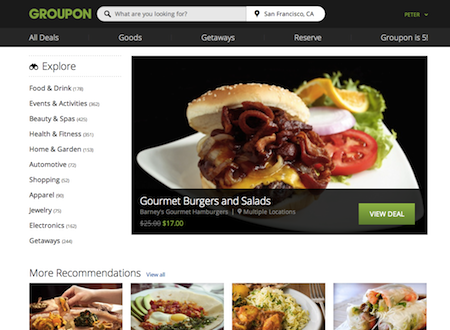I just returned from XOXO, a remarkable event celebrating independent creators of all stripes. Among the presenters was Marco Arment, former CTO of Tumblr, creator of Instapaper and founder of The Magazine. He talked about the challenges he’s faced as an independent software developer, and then announced his forthcoming product: Overcast.fm, a podcast app.
In hearing about this, my heart both rose and sank. As some friends of mine know, if I were to ever go independent and try to make a thing, it would be a podcast app (thanks to my commute, I listen to podcasts around 2 hours a day). My heart rose because, given Marco’s track record (particularly with Instapaper), I’m excited to see what he does. It sank because of my personal reality that, practically, designing and developing a podcast app is nothing I could undertake at this point of my life, with my career, family, and, oh right, I’m not a developer.
Given that, I thought I’d share why I think it’s a great time to create a great podcast app.
This might seem counterintuitive at first, because the podcast player space is quite crowded (over a dozen apps, such as Instacast, Downcast, Stitcher, and the app I use, iCatcher), and has one exceedingly dominant player, Apple. (If memory serves, Apple launching podcast capabilities was what lead to the demise of Odeo, which lead to the rise of Twitter, but that’s another story.)
The thing is, none of these players are great, or, in my eyes, even good. The ones I’ve tried out all have significant drawbacks. I settled on iCatcher because it had a couple personal must-have features — playlists (so I can have different streams in my morning and evening commutes, and then different again on the weekend), and true double-speed playback (most podcast apps “2x” speed is actually 1.5). But it’s user interface is a wretched disaster that I stumble over even after a couple years of use.
So, even though the market seems saturated, I believe that there’s an opportunity for something truly great to rise above. And there is room to improve across many aspects.
UI Design
Podcast apps would benefit from truly elegant, detail-oriented design, the kind of fit-and-finish we’re seeing, in the note-taking space, with Vesper or Evernote, or what Instapaper pioneered in reading.
However, a shortcoming of every podcast app I used is the amount of visual attention it requires. Developers confuse “UI” with graphical user interface. The thing is, I don’t want to look at my phone when I’m listening to podcasts. Typically, I’m driving, and fiddling with small touchscreen controls is distracting (and potentially dangerous). Podcast apps are ripe for voice user interface exploration and innovation.
Discovery
Finding and subscribing to podcasts of interest is a largely manual, and often arduous, process. My typical mode of discovery is through the AV Club’s weekly Podmass column, and if something sounds interesting, I then have to hunt it down through my app’s search feature. Yet, nearly 15 years ago (has it been that long?) TiVo showed the power of taste-based recommendations, which Netflix has taken to a new level. Where’s the intelligence that takes the podcasts I subscribe to, matches it with others, and makes suggestions?
Management
Once I’ve found podcasts, organizing them into playlists is also a chore, because it proves to be an interface challenge within a smartphone screen. Instacast is smart to support cross-device management and syncing, which means I could use the bigger screens of a tablet or PC to organize my podcasts, and the phone acts primarily as a player. (This was the brilliance of the original iPod — other MP3 players were loaded with features for organizing and managing your music, which made their interfaces unwieldy, whereas Apple offloaded all that to the PC, so the iPod could be simple.) Still, tagging, rating, and organizing podcasts (for those interested in doing so) has much room for improvement.
Playback
This is where everything we’ve learned from Pandora (just hit play and go) and Netflix (leaving off and picking up) could come into play. Additionally, this is where a voice UI becomes crucial — when I’m listening to podcasts, the last thing I want to do is looking at my phone, and fiddle with controls.
Sandbox for media consumption
Ultimately, my interest in designing a podcast app was that it would provide a sandbox for exploring media consumption behaviors and models. As a media junkie, I have a vested interest in the tools we use for listening, watching, and reading, and I’m sure there is heaps of room to explore and improve these experiences. What’s great about podcasts is that this is freely accessible media, with creators eager to give away their material, so you have this massive corpus of content to play with, and no worries about licensing and fees.
Now there’s no Nielsen numbers for podcasts, so it’s unclear just how large the current audience is, and how actively they listen. Podcasts have not yet broken ‘mainstream’ to compete with terrestrial or satellite radio. It’s possible that a killer app could provide podcasts that quantum leap of exposure. More likely, it will be like blogs and RSS feeds, where there is a sizable, but relatively limited, ultimate audience. I suspect that integrating podcasts with other media will be where this all heads. Experimenting with podcasts, you could develop new paradigms for media consumption that could then also be applied to “premium” content.
